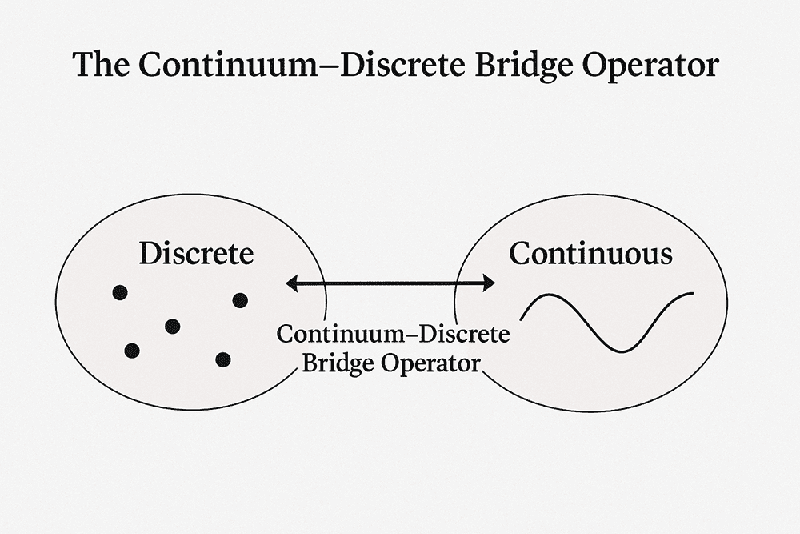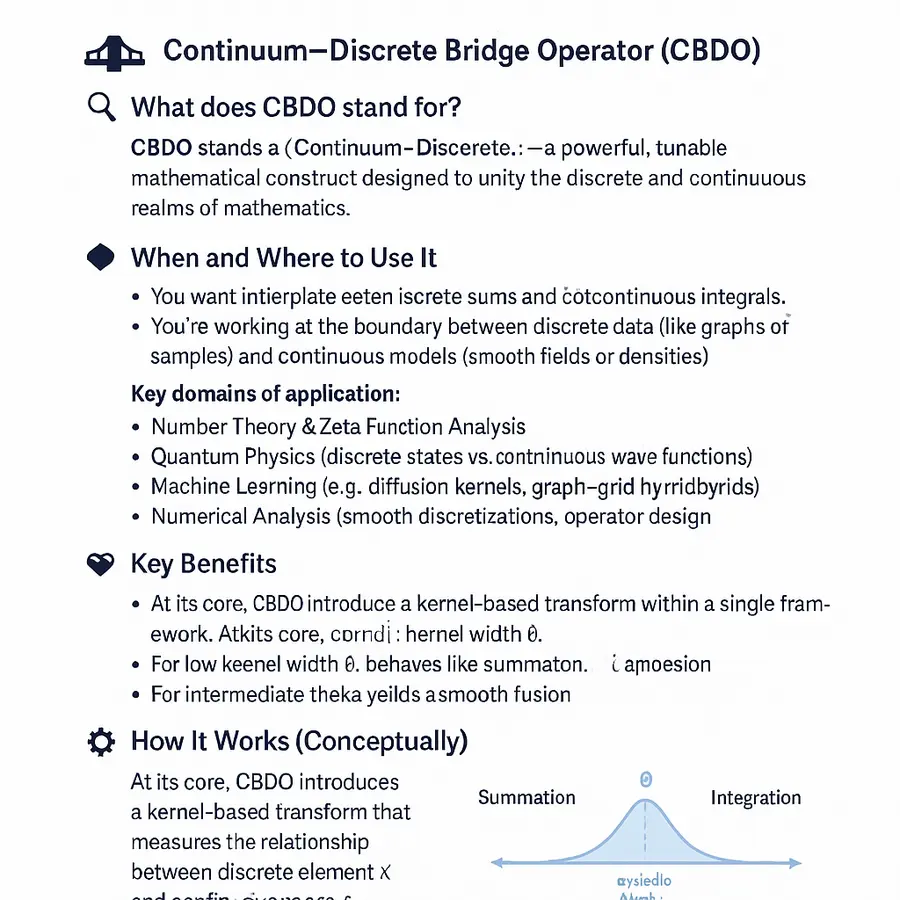Continuum–Discrete Bridge Operator (CBDO)
What does CBDO stand for?
CBDO stands for the Continuum–Discrete Bridge Operator—a powerful, tunable mathematical construct designed to unify the discrete and continuous realms of mathematics.
What Problem Does It Solve?
Mathematics has long been divided into two distinct worlds:
- Discrete: integers, graphs, algorithms
- Continuous: real numbers, integrals, manifolds, PDEs
These domains often require separate tools, yet many modern challenges—such as quantum physics, AI, and numerical methods—demand a unified approach. CBDO fills this gap.

When and Where to Use It
CBDO is especially useful when:
⦁ You want to interpolate between discrete sums and continuous integrals.
⦁ You’re working at the boundary between discrete data (like graphs or samples) and continuous models (like smooth fields or densities).
⦁ You seek a mathematically principled way to blend symbolic computation with statistical learning.
Key domains of application:
- Number Theory & Zeta Function Analysis
- Quantum Physics (discrete states vs. continuous wave functions)
- Machine Learning (e.g., diffusion kernels, graph–grid hybrids)
- Numerical Analysis (smooth discretizations, operator design)
Key Benefits of CBDO
Unified Mathematical Framework
CBDO smoothly connects discrete and continuous domains via a tunable kernel. This bridges:
Summation ↔ Integration
Graphs ↔ Manifolds
Algorithms ↔ Differential equations
🔑 It dissolves the artificial boundary between combinatorics and analysis.
Kernel Flexibility and Generalization
By allowing different kernel parameterizations, the CBDO generalizes:
Euler–Maclaurin formula (discrete–continuous summation)
Fourier transforms (frequency–time duality)
Diffusion and graph kernels (in machine learning)
🔑 You can tailor the bridge to any domain or scale.
Cross-Domain Applicability
CBDO has immediate use in:
Number theory: bridging primes and analytic continuation
Quantum physics: mapping discrete states to continuous path integrals
Machine learning: transitioning from graph data to continuous diffusion models
🔑 It becomes a universal tool across physics, math, and AI.
Smooth Interpolation Control
The parameter θ provides a dial to tune behavior:
θ → 0: recovers pure summation
θ → ∞: becomes a classical integral
🔑 This allows gradual transitions, hybrid reasoning, and adaptive simulations.
How It Works (Conceptually)
At its core, the CBDO introduces a kernel-based transform that measures the relationship between a discrete element x and a continuous point y. The operator integrates over all such kernel-weighted interactions.
- For low kernel width θ it behaves like summation.
- For high θ, it approaches integration.
- Intermediate θ yields a smooth fusion of both.
This makes CBDO a flexible tool for crafting hybrid models that neither pure integration nor summation alone could capture.

